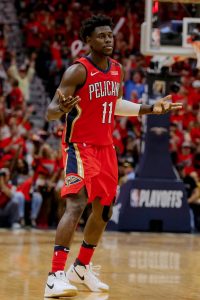Daryl Morey‘s plan to knock off the Warriors just about worked. Up 3-2 in the Western Conference Finals, the Rockets were faced with the challenge of winning one more game without star point guard Chris Paul in their lineup. Houston couldn’t pull it off, losing Game 6 in Oakland, then suffering through one of the worst shooting slumps in NBA history at home in Game 7.
While it may be tempting to view the series’ result – and the Warriors’ eventual title victory – as an inevitability, no NBA team in the last two years has pushed Golden State like the Rockets did, which is a sign that Houston is on the right track. Now, Morey and the front office will have to ensure they remain on that track, with several important players eligible for free agency this offseason.
Here are five key questions facing the franchise this summer:
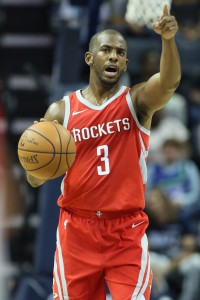 1. Will Chris Paul and Clint Capela return?
1. Will Chris Paul and Clint Capela return?
Paul and Capela are two of the top seven or eight free agents available this offseason, and the Rockets could be in trouble if they fail to re-sign either one.
Paul’s impact is obvious. The veteran play-maker took the pressure off James Harden in 2017/18, sharing the ball-handling load when they played alongside each other and running the offense when Harden was on the bench. When the Rockets acquired him from the Clippers last year, CP3 had to opt into the final year of his previous contract rather than signing a new one, but there appeared to be a tacit understanding that he’d get a lucrative, long-term deal from Houston in 2018. That still seems like the probable outcome, and it would be a shock if he left at this point.
As for Capela, he has no All-Star appearances or All-NBA nods to his name, but the 24-year-old’s gradual improvement has made him an important part of this roster. He averaged a double-double (13.9 PPG, 10.8 RPG) in 2017/18, leading the NBA in FG% (.652) and anchoring Houston’s defense (1.9 BPG). While Capela doesn’t stretch the floor like some of the league’s elite young bigs, he does pretty much everything else you’d want from a center, effectively setting screens, finishing at the rim, and protecting the rim on the other end of the court.
Assuming Paul re-signs, the Rockets wouldn’t have any cap room to go out and make another impact signing, so bringing back Capela looks like the club’s best bet for staying strong at the five. The Rockets will just have to hope they aren’t faced with matching a massive offer sheet for Capela, who would be a much safer investment at $15-20MM per year than at $25MM annually.
2. Will Trevor Ariza re-sign with the Rockets?
Although Paul and Capela will be Houston’s top priorities in free agency, Ariza’s positive impact shouldn’t be overlooked, Game 7 of the Western Conference Finals notwithstanding. Up until that last game against the Warriors, Ariza had been a reliable three-and-D mainstay in the Rockets’ rotation all year long, making 36.8% of his three-point attempts during the regular season.
Players like Ariza and P.J. Tucker – who can hit corner threes and match up on defense with dangerous wing scorers – are crucial to Houston’s success, particularly against Golden State, so I expect the Rockets to make a strong effort to retain Ariza.
Ariza’s free agency reminds me a lot of Andre Iguodala‘s a year ago. When Iguodala reached the open market, rival suitors – who recognized that poaching Iggy from the Warriors was the most viable way to hurt the defending champs – were aggressive in pursuing him. The Dubs ultimately won the bidding, but it cost them much more (three years, $48MM) than they would have liked to bring back Iguodala.
Teams in direct competition with the Rockets and in need of three-and-D wings could take a similar approach to Ariza’s free agency this summer, which is why a report suggesting the veteran forward is hoping for a $50-60MM payday isn’t as outrageous as it might seem.
While Ariza may not quite get that high, it wouldn’t surprise me at all if he receives an offer worth $30MM+ or $40MM+. If he does, the Rockets will have to make a tough decision on whether he’s worth the investment or whether they can get similar production from more affordable players like Luc Mbah a Moute (who will also be a free agent).
Read more
3. How far into the luxury tax is new owner Tilman Fertitta willing to go?
Before we explore other roster additions for the Rockets, it’s worth taking a step back to examine just how much Rockets ownership is willing to pay in terms of team salary and tax penalties. Former owner Leslie Alexander didn’t hesitate the pay the luxury tax for a title contender, and Fertitta has indicated he’ll follow suit, but we haven’t seen evidence yet of just how big a tax bill he’s willing to stomach.
If the Rockets commit $50MM to Paul and Capela for 2018/19, it would increase the club’s guaranteed salaries to $127MM+ for just eight players, putting them well beyond the tax line with nearly half the roster still to fill out. From there, simply signing six more minimum-salary players would result in substantial penalties. Those penalties would increase further if Houston re-signs Ariza or other veterans for more than the minimum, or uses its taxpayer mid-level exception to bring in an outside free agent.
Fertitta knew this day was coming when he purchased the Rockets last year, so he won’t be caught off guard by the increasing costs of the roster, but until we see him sign off on a $140MM+ team salary, we won’t know with 100% certainty that it’s a pill he’s ready to swallow.
4. Can the Rockets find a taker for Ryan Anderson?
One way to cut costs would be to find someone willing to take on Anderson’s contract, which still has two years and nearly $42MM left on it. Of course, the Rockets have been looking for a trade partner for that deal for at least a year, to no avail.
On the surface, the Nets/Hornets swap that will send Timofey Mozgov (two years, $33MM) to Charlotte looks like a positive sign for the Rockets — those sort of contracts are movable. The Nets are giving up two second-round picks and cash in that trade, and have to take on one year of Dwight Howard ($23.5MM).
Still, there are several other factors in play in that deal: Howard reportedly wasn’t a fit in Charlotte from a chemistry and locker-room standpoint, particularly with Steve Clifford gone, so the Hornets were happy to get rid of him. The Hornets were also up against the tax line for 2018/19 and needed to cut costs for the coming year. Mozgov’s $16MM-ish annual salary isn’t quite as onerous as Anderson’s $20MM+. And, fair or not, teams might be less likely to bail out the 65-win Rockets by taking Anderson than they were with the 28-win Nets and Mozgov.
Taking on an even more expensive one-year contract like Howard’s would reduce the extra assets the Rockets have to include in a potential Anderson swap, as it did for the Nets. But if Houston’s goal is to shed salary for 2018/19, that won’t do much good.
The Brooklyn trade that more accurately represents what an Anderson deal might look like is the DeMarre Carroll swap from the 2017 offseason — in that move, the Nets took on Carroll’s exorbitant salary, sent a smaller unwanted contract of their own (Justin Hamilton) to Toronto, and received two draft picks (one first-rounder) for their troubles. In any Anderson trade, the Rockets would likely have to move at least one first-round pick and take on an unwanted contract that’s “less bad” than Anderson’s, as Toronto did.
5. Do the Rockets have a real shot at LeBron James?
Now that we’ve thoroughly examined the Rockets’ cap-related challenges, it’s time for the big question. Houston is reportedly considered one of a handful of viable destinations for LeBron, but how on earth could the Rockets land him, given their cap limitations?
The first step would be to get James to exercise his player option, as Paul did a year ago. If he doesn’t do that, his path to Houston becomes a whole lot trickier — the Rockets would likely have to let Capela walk, trade or stretch Anderson, and then work out a sign-and-trade for James. In that scenario, the Rockets would have to stay below the tax apron, as clubs who acquire a player in a sign-and-trade deal are hard-capped at that line.
But if James opts in, there’s a clearer path to a trade, since the Rockets wouldn’t have to worry about that tax apron. The Cavs would be extremely unlikely to take on Anderson’s contract, but a package of Gordon, Tucker, Nene, Chinanu Onuaku, Zhou Qi, and Aaron Jackson just barely works from a salary-matching perspective. Not all those players would appeal to Cleveland, but Gordon and Tucker could probably be flipped for positive value, and the others aren’t expensive. If the Rockets included a couple future first-round picks in their offer, the Cavs could do worse.
In that scenario, the Rockets would have Harden and James on massive deals. They’d still have Anderson under contract, and they’d look to re-sign Paul and Capela. If we once again assume a $50MM combined 2018/19 price tag for CP3 and Capela, that would add up to a staggering $136MM+ for five players, which wouldn’t exactly be ideal.
Nonetheless, Harden, James, Paul, and Capela could be the only attainable four-player group in the NBA with a realistic chance of getting past the Warriors next season, so if the Rockets have a chance to make it happen, I don’t doubt they’ll go for it.
Here’s where things currently stand for the Rockets financially:
Guaranteed Salary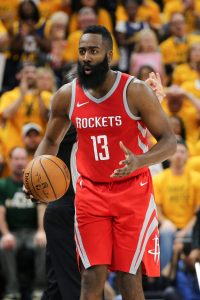
- James Harden ($30,421,854)
- Ryan Anderson ($20,421,546)
- Eric Gordon ($13,500,375)
- P.J. Tucker ($7,969,537)
- Nene ($3,651,480)
- Chinanu Onuaku ($1,544,951)
- Troy Williams ($122,741) — Waived via stretch provision
- Total: $77,632,484
Player Options
Team Options
Non-Guaranteed Salary
- Zhou Qi ($1,378,242)
- Total: $1,378,242
Restricted Free Agents
Unrestricted Free Agents / Other Cap Holds
- Chris Paul ($35,350,000): Bird rights2
- Trevor Ariza ($14,099,732): Bird rights
- Tarik Black ($3,948,000): Non-Bird rights
- Gerald Green ($1,499,698): Non-Bird rights
- Joe Johnson ($1,499,698): Non-Bird rights
- Luc Mbah a Moute ($1,499,698): Non-Bird rights
- Total: $57,896,826
Projected Salary Cap: $101,000,000
Projected Cap Room: None
- We’re assuming that the Rockets will keep cap holds for Paul and Capela on their books in an effort to re-sign both players. In that scenario, the team would remain well over the cap.
- In the extremely unlikely event that Houston wants to clear space by parting with those two players and the rest of their free agents, the Rockets could get up to about $18.38MM in cap room without trading or cutting any guaranteed contracts.
Footnotes:
- Jackson’s salary will remain non-guaranteed if his team option is exercised.
- Based on CBA rules, Paul’s cap hold should be $36,899,243. However, his cap hold can’t exceed his maximum salary, which currently projects to be $35,350,000.
Note: Rookie scale cap holds are estimates based on salary cap projections and could increase or decrease depending on where the cap lands.
Salary information from Basketball Insiders was used in the creation of this post. Photos courtesy of USA Today Sports Images.
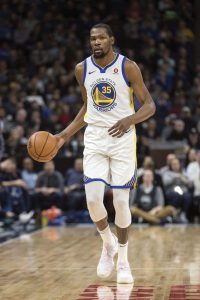 1. What will Durant’s new contract look like?
1. What will Durant’s new contract look like?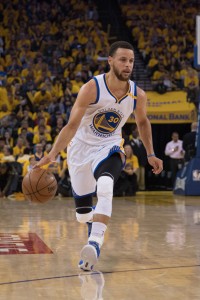
 1. Will Chris Paul and
1. Will Chris Paul and 
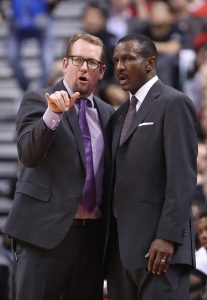 1. Was firing Casey and replacing him with Nick Nurse the right move?
1. Was firing Casey and replacing him with Nick Nurse the right move?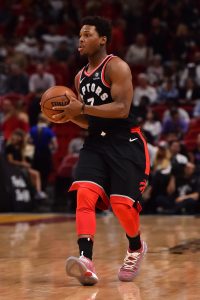
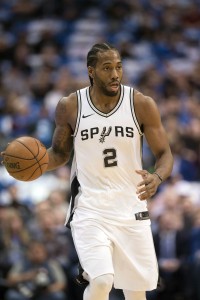 1. Will the Celtics make another major trade this offseason?
1. Will the Celtics make another major trade this offseason?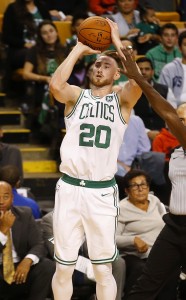
 1. Will the Sixers be able to lure a top free agent to Philadelphia?
1. Will the Sixers be able to lure a top free agent to Philadelphia?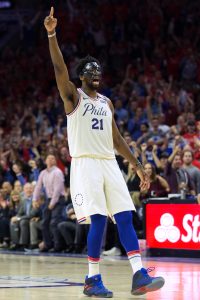
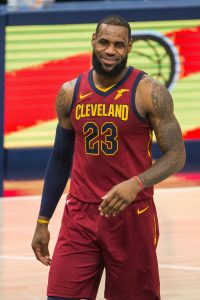 1. So… what’s LeBron going to do?
1. So… what’s LeBron going to do?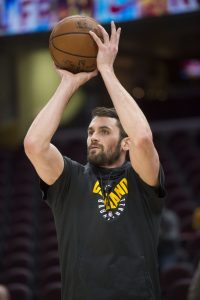
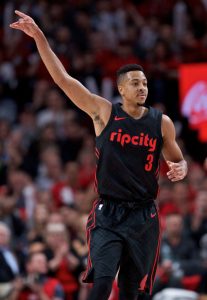 1. Will the Blazers consider breaking up their star backcourt?
1. Will the Blazers consider breaking up their star backcourt?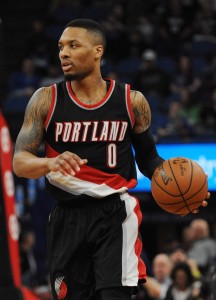
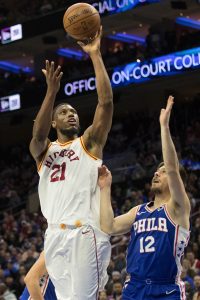 1. Will
1. Will 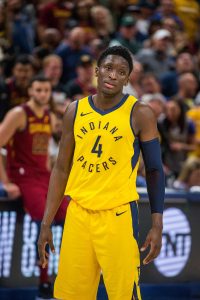
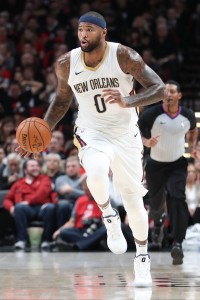 1. Will the Pelicans re-sign Cousins?
1. Will the Pelicans re-sign Cousins?